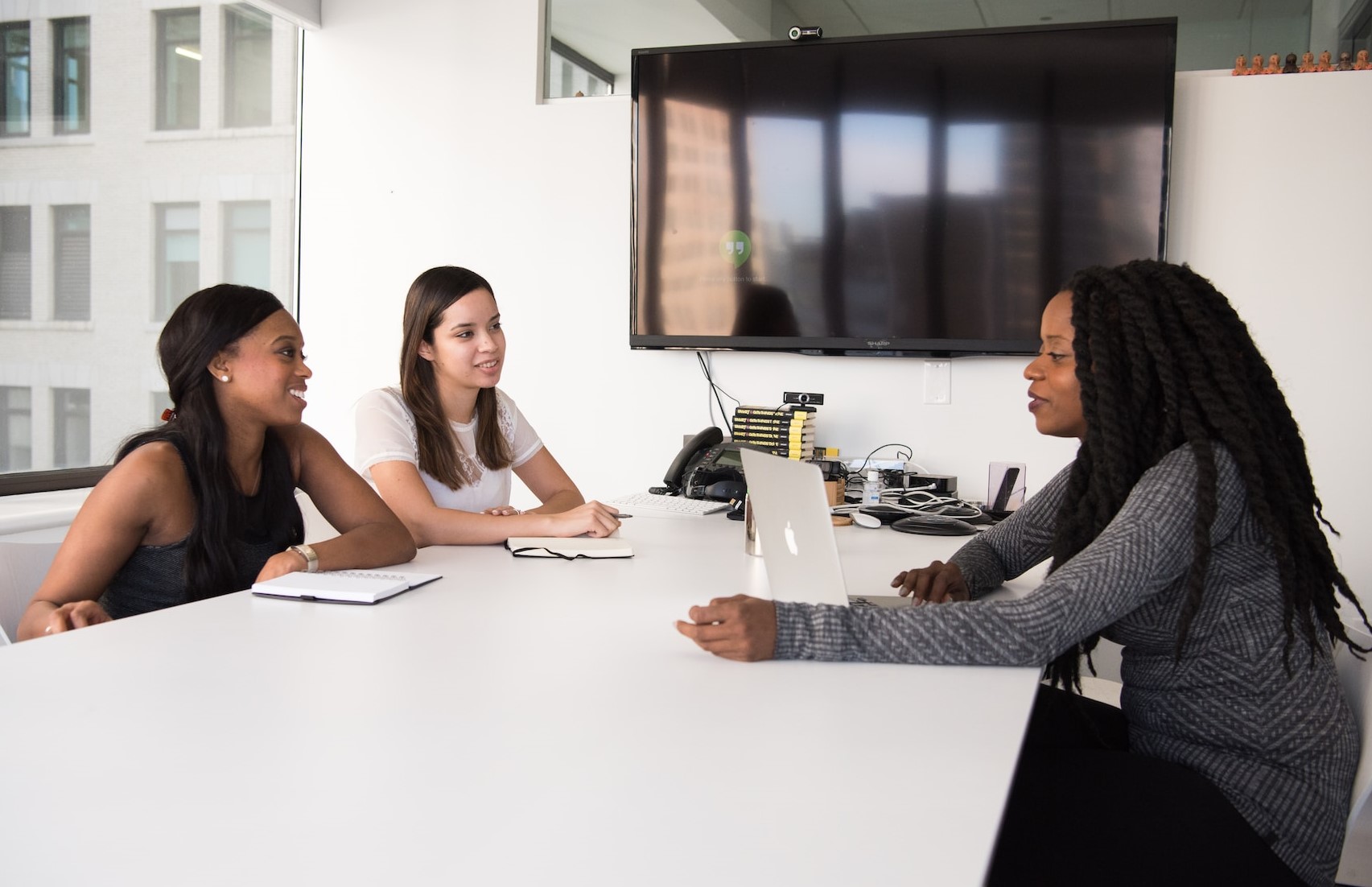# Ideate
# Troika Consulting
- Purpose
- Mutual support for challenges
- Time required
- 30 to 45 minutes
- Participants
- Design Thinking team (Groups of three)
- Level of experience
- Beginner
# What is it about?
Peer-to-peer coaching is carried out within groups of three in order to support each other with challenges.

# The goal
The aim of this method is to give each participant the opportunity to gain new insights for challenges in short counselling sessions.
# How to do it?
- Emphasize that the content of the discussion is confidential and that this is a protected space. Define the key question for the whole group, e.g. ‘What is your challenge right now?’ or ‘What do you need help with right now?’.
- Form groups of three and make sure there is a mix of different backgrounds and perspectives. Place the chairs in the groups of three close together.
- One participant per round is the client and the other two are the counsellors. This means that everyone has the same opportunity to coach or receive advice.
- Procedure
- 1 minute: Participants think of a question they would like to ask the counsellors.
- 1-2 minutes: The first client asks his or her question in the group of three.
- 1-2 minutes: Counsellors address comprehension questions to the client.
- The client turns their back to the counsellors.
- 4-5 minutes: Counsellors develop ideas, suggestions and advice. The client takes notes and listens in silence.
- 1-2 minutes: The client is allowed to turn round again and share their key findings.
- Now the roles are swapped. It is the next participant's turn as the client and the process is repeated until all three have been clients once.
- If the first round of troika counselling has not produced satisfactory results, a second round can take place immediately afterwards.
# When do you need it?
When support is required for a challenge.
# Resources
- chairs
# Advantages
Above all, the ability to effectively ask for help, listen and give advice is promoted. Building trust is encouraged through mutual support within the group.
# Disadvantages
The success of the method is highly dependent on the individuals involved. The groups are small and therefore a lack of expertise, for example, cannot be compensated for. To be successful, the method requires good co-operation and openness among the participants. Tensions or conflicts can have a negative impact on the results.
# Keep in mind
Warn participants not to jump to conclusions too quickly. This can be avoided through critical questioning. In addition, ten minutes per client is more effective than a 20-minute session. It is therefore better to conduct a second round if the first round has not produced the desired results. The room layout must also be taken into account; a confidential and disruption-free environment should be guaranteed.
# See also
| Previous methods | Alternative methods | Following methods |
# Sources
- Troika Consulting (German) (opens new window) Liberating Structures - Innovation durch echte Zusammenarbeit.
- Christian Botta (2022): Troika Consulting (Liberating Structures) (German) (opens new window) projektmagazin.